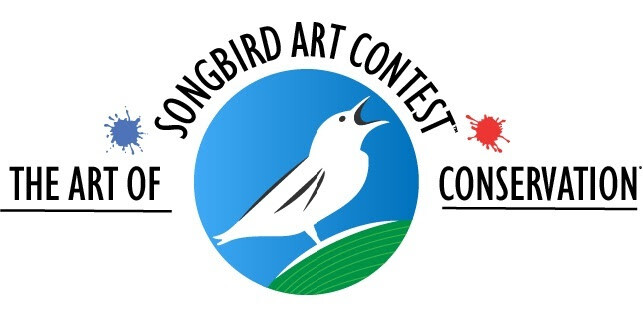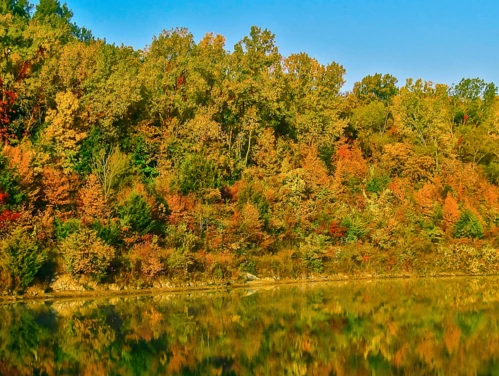Iowa’s forests are unique, hidden gems in a land of farm fields and grasslands. Some of the most beautiful forests in the Midwest are found in Iowa.
Healthy, growing forests clean our air and water, conserve our soil and energy resources, provide critical wildlife habitat, and make our communities a more pleasant place to live and work.
Here’s some fun options for you and your family to celebrate Iowa forests this fall.
- Explore a State Forest.
- Get your fall color fix - check the DNR fall colors weekly report for details on where to see the best fall color in Iowa. Fall color will be at or near its peak across Iowa this weekend.
- Check out our Forestry Landowner Assistance webpage for information and resources on how to make sustainable management decisions on your forested land.
Tackle Your Invasives
Late autumn and even early winter are great times to identify and treat invasive species that shade out desirable native plants.
Leaves of invasives remain green and attached often through Thanksgiving, making it easy to identify bush honeysuckles and buckthorn thickets in woodlots, edges and other areas when other plants are bare. Herbicides work well in autumn as sap moves to the roots. Here’s how:
- Bush honeysuckle is a deciduous shrub with seed-loaded berries ranging from red, orange or black. Several species of invasive honeysuckle range in height from 7 feet to 15 feet high. It is easy to identify invasive versus native honeysuckle. Native honeysuckle plants don’t hold leaves late fall. Break off an older stem—invasives have hollow, brown centers. Native honeysuckle stems are solid.
- Glossy buckthorn is either a small tree or tall shrub with brown-gray bark with light colored lenticels or pores. Its sapwood is yellow with pink to orange heartwood. Terminal buds are shaped like a deer hoof, in pairs with a thorn in between. Seeds remain viable up to 3 years. Management Techniques: Apply a 25 percent triclopyr solution plus a penetrant once to the lower 12–18 inches of plant stems until wet (but avoid runoff) between May and November. Follow labels for dosage and surfactant options.
Learn more about forest invasive species on the DNR's Invasive Plants web page.
Leave the leaves in your yard this fall
Our yards can make us proud and provide many hours of joy during the warmer months. Try to resist the urge to clean up all the dead growth that has built up over the warmer months and embrace the mess.
Instead of piling and burning or bagging and sending your yard waste to a landfill, maintain strategic piles of organic matter on the edges of your yard for wildlife.
If you can live with a little mess, wildlife will respond.
- A layer of leaves is vital insulation from the cold for the many animals that hide within and are beneficial insulation for tree roots as well.
- Leaves improve micro-organisms that are the life of soil that provide needed food and nutrients to plants and trees. Leaves can also be useful in areas that have compacted soil as they help to reduce runoff, keeping soil on site.
- If you use leaves for compost, consider creating a leaf pile and allowing it to break down naturally if space allows. Mulch and leaf piles break down into nice loam which can then be used to supplement planters or other flower beds.
- Providing an unmowed area on the edge of your yard is a great way to provide a place for piled organic matter like leaves, branches, and stems. Keeping piles away from the house will reduce the chance of unwanted visitors inside.
- Designate some areas in your yard where you can leave leaves whole. Shredded leaves may destroy eggs, caterpillars and cocoons.
Iowa Songbird Art Contest
Iowa youth artists are encouraged to celebrate the beauty and wonder of Iowa songbirds. Students (grades K-12) select one bird from the featured list, research its habitat and conservation needs, and create an original, hand-drawn artwork. Students in grades 4 and up are also required to submit a short creative writing piece to accompany their art. Deadline for entries is November 30, 2025.
Find complete rules and guidelines on the Iowa Songbird Art Contest Entry Form.

